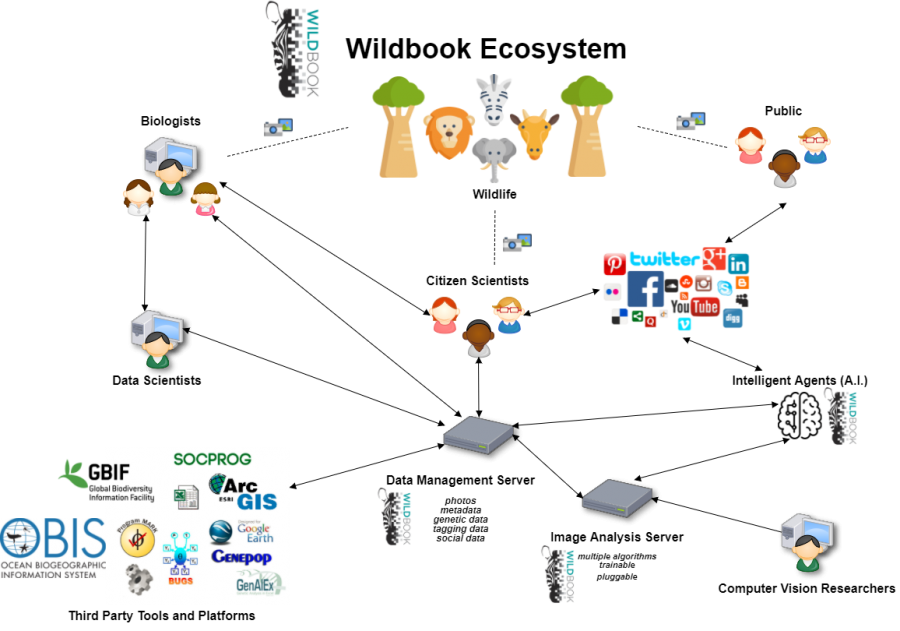Why use Wild North Wildbook ?
The status of large carnivores and other iconic species across the northern hemisphere is of concern - bears, wolves, mountain lions and wolverines are all under pressure from human activities and their population status in many regions is uncertain.
Monitoring both the population size and geographic range of threatened and endangered species are two critical factors for establishing effective, comprehensive and timely conservation plans. Unfortunately, current population counting methods rely on disparate manual processes that are not scalable, can take years, and still result in wide ranging estimates. Regardless, the unquestioned need for population counts consumes significant time and effort by the research and conservation community, who already lack funding and resources for the specialized work that they need to do.
Habitat preservation is another critical factor in species conservation. With a comprehensive and verifiable view of the ranges of these critical species, legislative and policy change for habitat preservation can be accurately established and continuously monitored to benefit both wildlife and human populations.
The vision of this Wild North Wildbook project is to use innovative technology that leverages both scientist collected and crowdsourced images to enable continuous and automated monitoring of these species continent-wide. This solution provides a powerful technology platform that delivers a large high quality dataset to the research and conservation communities, supporting their efforts to maintain or bring back these species populations to healthy levels.
What does Wild North Wildbook do?
Wild North Wildbook uses photographs of individual animals, features, coat patterns and textures to distinguish between animals to identify individuals in as few as three clicks. Anyone can contribute to Wild North Wildbook. All you need is to submit your photos and any other sighting information and WIld North Wildbook does the rest. You and the research community will be able to follow your individual animal, find out who she is friends with, where she goes, and who has seen her lately.
Researchers can manage and backup their data
Import your photos and sightings data in many common picture formats. Once imported, you can view your sightings online, follow individuals you have identified, add metadata, manage individual data, and use all the other Wildbook features. Having your data in a Wildbook also serves as a backup service for your own separate storage systems. See our Data Use Framework here.
Analysis tools
Wild North Wildbook provides tools for managing photo-identification and sightings databases and includes a growing number of features to help users work with additional software by linking to external programs, including ArcGIS, SOCPROG, Genepop, GenAIEx, and Google Earth.
